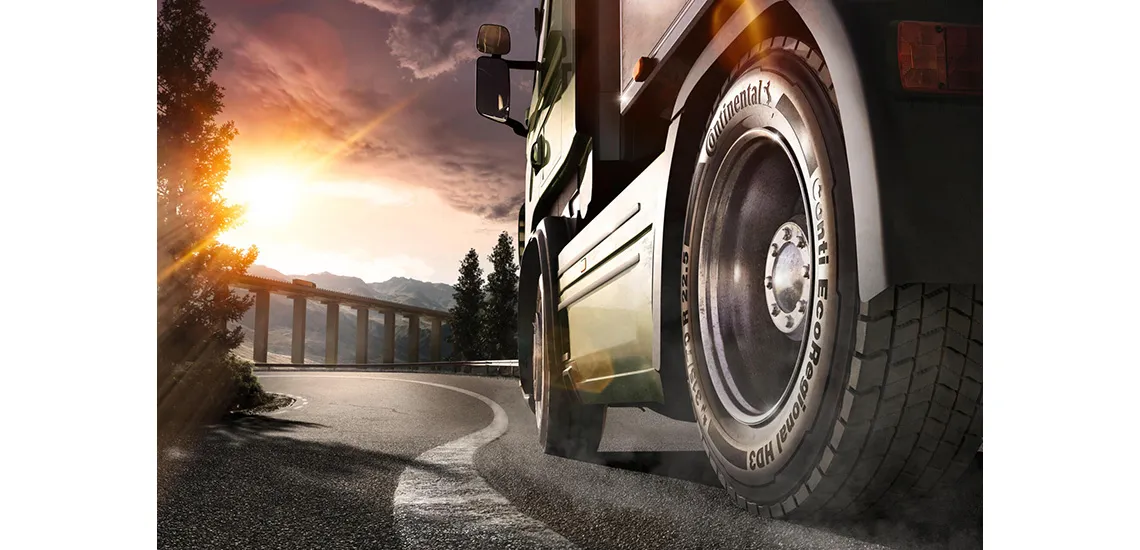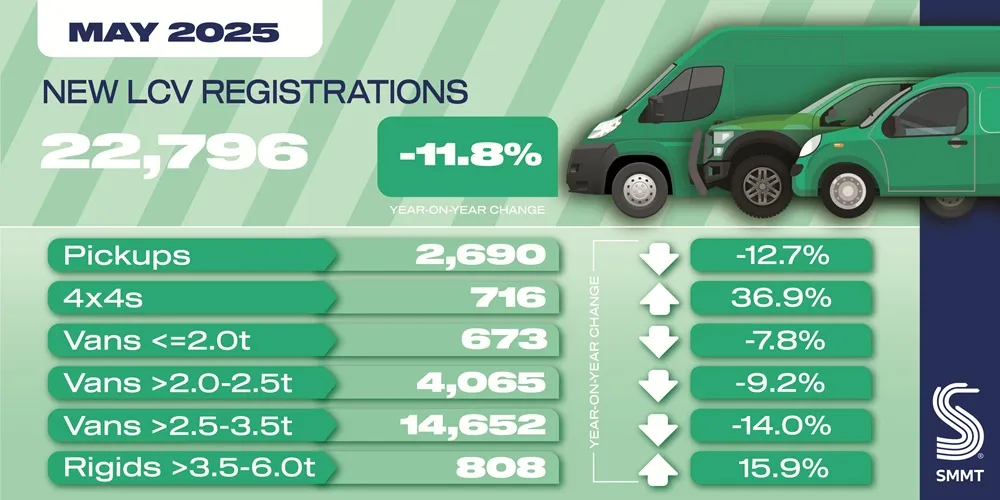As one quarter of all CO2 emissions from road transport originate from trucks and buses, how can these manufacturers reduce fuel emissions?
Continental Commercial Vehicle Days
For the final event of the Continental Commercial Vehicle Days Press Event, a talk was given on how tyres can help reduce CO2 emissions from commercial vehicles. Starting off the event with a video, some interesting information was gleaned about newly-introduced sustainable measures. The European Union Commission has already put into place a new regulation to reduce average CO2 emissions by new heavy duty vehicles by 15% by 2025 and 30% by 2030.
This measure will be via a new regulation for truck manufacturers. Failure for these vehicle manufacturers to comply with this new regulation will result in penalty fees. Although fleets are currently exempt, it’s expected that further regulations will affect fleet operators. To aid manufacturers, the EU has created a new mandatory simulation tool, named VECTO, which will help manufacturers of vehicles have an idea of the projected CO2 emissions, as well as the fuel performance of each individual truck configuration that they possess.
To gain this insight there are four specific parameters at play. These four areas are simulated driving behaviour, engine performance, aerodynamic drag and the rolling resistance of the tyres. So, by analysing the vehicle and its adaptability on the road, fleets operators will in turn have a more enhanced understanding of how to utilise the fuel the vehicle requires in turn.
Kai Rühling, Senior PR Consultant AND Content Management of PLT Tyres, introduced the session by explaining the clear importance of tyres in line with the new European Union Commission regulation. The key to saving fuel and thereby reducing CO2 emissions, he argued, was within one parameter of the tyre itself: the rolling resistance. To prove this, he cited an example of a racing slick tyre commonly seen in Formula One driving. He noted that such a tyre would obviously not be an ideal tyre model for a truck in terms of safety and mileage. This helped to reiterate the important concept that rolling resistance has a dual purpose essential for paving the way for an easier transition in regards to the new environmental regulations.
Lutz Stäbner, Head of Product Management Truck Tres EMEA, thereafter presented the latest in tyre technology. He started by explaining that the current emphasis, worldwide is to focus on sustainability, as well as increasing organisation and e-mobility. Reducing CO2 emissions, naturally is a core part of the current sustainability strategy, however Stäbner noted that the fleet framework within Europe has many factors to consider when looking into how to improve sustainability measures. Normally, the key elements with sales forces and fleet users tend to be the weight of the loads involved, and the distance to travel, however the type of industry and product are also important factors. In Sweden, for example wood production is one of their biggest industries for fleets, and operators would naturally need very robust tyres to navigate the forests and woods where the trees are sourced. The more robust the tyre, the higher the rolling resistance will be, so Stäbner is able to show that in a versatile market, when applied, rolling resistance is an asset for operators.
Stäbner notes that consumer behaviour online has continued to expand and increase, with companies like Amazon garnering sales of 40% more in the second quarter of 2020 than they received in the equivalent period in 2019, due almost exclusively to the pandemic. Just as important with consumer behaviour is the opportunity to return products, with one in four of the trucks that deliver goods transporting returns. Stäbner acknowledges that the tyre industry’s role has no influence on consumer behaviour, but it does have an ethical and responsible role regarding sustainability and, crucially is able to have a positive impact on CO2 emissions, including the 1.5 billion kilogrammes of CO2 gases created by trucks carrying returns from online orders.
With trucks, buses and coaches currently accounting for 6% of the total European Union carbon emissions, this figure represents a quarter of the 25% of greenhouse gases. To put into context, transport emissions represent 25% of the total emissions within Europe. A consequence of this is that the go green movement is fuelling requests for greener supply chains, which in turn is one of the factors influencing procurement decisions from transport companies around Europe, endeavouring to reduce their carbon footprint. Originally the 1242 regulation in 2019 only targeted HGV vehicles, however the regulation has now been revised to include smaller trucks with gross weights of 7.5 tonnes or more. The next step will be to extend the regulation to buses, coaches and trailers, which Stäbner agrees is a logical step.
Stäbner explains why tyre manufacturers are considered so important from the perspective of Original Equipment Manufacturer (OEMs), using a graph to explain the relationship between the cost of technology and the reduction of CO2 emissions. Simply by reducing rolling resistance tyre manufacturers can achieve significantly higher reductions in emissions compared with the technology costs compared with that achievable with other components and techniques, such as Lightweighting, Transmission, Aerodynamics and Engine costs, whilst by 2025 Automated Tyre Inflation Systems (ATIS), Tyre Pressure Monitoring Systems (TPMS), Advanced Driver Assist Systems and Waste Heat Recovery will be the latest innovations will provide further technological advancements which will contribute to reducing rolling resistance still further.
With fuel linked to emissions, the perspective is that tyres influence around 40% of fleet operating costs, with 30% of that being the fuel within the tyre’s lifetime. This can be negatively or positively influenced by what rolling resistance the tyre has. Stäbner offered an example of an annual vehicle mileage of 120,000 km, with a fleet of 100 trucks. The potential saving for those 100 trucks with the enhanced technology added to their fleet would amount to 228,000 litres, saving 273,000 euros and, as a result, a reduction of CO2 emissions by over 604 tonnes. This would be equal to the absorbing capacity of 600 trees.
Stäbner also focused on the fact that Continental’s Digital Solutions offer is one of the company’s strongest tools and is being touted as a way to work towards optimising aftercare within the commercial vehicle segment. There are various elements here, with the tyre management tool offering load monitoring, mileage estimations, an advanced sensor feature which uses Bluetooth configuration and tread depth tyre management. There is also an app based tyre monitoring service, which offers a telematic display and the ContiConnect live feature, which offers remote tyre checking and predictive maintenance features, which look to possible problems within the near future for your tyres.
Summing up the key points, Stäbner believes that the company’s digital solutions, coupled with the latest in tyre technology, will provide the solution to fulfilling the EU Commission’s Regulation, before 2030.








